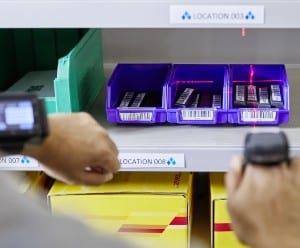數位化和電子商務的快速發展,全球貿易在疫情期間仍保持彈性

去年此時,整個世界的經濟成長戛然而止。
北美與歐洲仍然處於疫情初期階段,但亞太區已經感受到威力全開。
整個亞太地區,街道上空無一人、工廠關上大門,曾經繁忙的天空也變得空蕩蕩。許多城市陷入癱瘓,甚至有些國家整個停擺。用我們這一代的「經濟大蕭條」來形容一點也不為過。
疫情幾乎影響商業的每個環節,尤其是國內外貿易遭遇重創。從曼谷唐人街的路邊攤,到香港中環的奢華精品店,沒有任何商家能逃過一劫。
一年後,貿易模式顯示亞洲已經走在復甦道路。事實上,當北美與歐洲大部分地區持續掙扎之際,亞洲部分國家已經見到跨國貿易重返或超越疫情前水準。
與此同時,電子商務正蓬勃發展,連過去網路購物接受度不高的香港等市場也是如此。
我們可以肯定地說,疫情加速這些發展,隨著商品銷售在全球市集大幅成長,為許多企業扮演救生索角色,協助陷入困境的經濟持續運轉。
儘管如此,企業已經發展加速數位服務一段時間,因為他們知道網路銷售平台是企業成功的關鍵。
過去,人們必須走進商店買東西;今天,我們只需要利用手機,就能直接向製造商下單,從印尼訂購家具、從南韓購買電子商品。
企業本身也是如此,不再需要親自拜訪遙遠國度的工廠,就能在網路購買及補給存貨。事實上,DHL Express在最近研究預估,供應商與專業買家之間的所有企業對企業(B2B)銷售交易,在2025年80%將落實在數位通路。
雖然電子商務的崛起通常與企業對消費者(B2C)交易有關,但在Alibaba、Global Sources、Rakuten與IndiaMART等平台帶動下,B2B市集的全球銷售額在疫情爆發前就已經超越B2C部門,在2019年達到12.2兆美元(10.1兆歐元)的總值。
此數字是2013年銷售額5.8兆美元(4.8兆歐元)的2倍以上,預期將在2027年攀升至20.9兆美元(17.3兆歐元)。
從銷售量及銷售值來看,電子商務平台與網路市集的b2b交易,將近80%來自亞太區占了壓倒性的比例。
不出所料,此趨勢是由千禧世代所帶動,這群人現在正好是專業決策者的年齡,占所有b2b採購決策的73%。
身為數位原民的他們,在追求b2b交易時,會將個人經驗(例如上網購買每樣東西,從雜貨到居家電子用品等)轉變成更高的期望。例如:更快的運送時間;訂單彈性的增加;以及整個流程更高的能見度。
因此,在直接對消費者及b2b銷售量成長的同時,關於供應鏈作業的需求與複雜度也跟著提高。
對於在b2c之間扮演關鍵中介角色的物流公司而言,這對他們執行作業的方式具有重要意涵。
物流產業正經歷嚴重中斷,為了客戶日益提高的期望,加上快速的交易數位化,貨運承攬業者及運輸供應商正在採取創新的方法。
以DHL為例,已經推動多項新計畫,像是數位貨運平台myDHLi的引進,提供有關貨件的即時追蹤服務,讓寄件人及收貨人在任何特定時間點,都能對他們的貨物取得完整能見度。
其他方法包括:自動化通關;交易數位化以實現完全無紙化;甚至能計算貨件對CO2排放的影響,此選項透過替代燃料的選擇,減少或抵銷CO2的排放量。
事實上,我們可以說拜千禧世代所賜,產業的環境影響再度成為焦點,而DHL等公司也做出了回應。
公司最近承諾,航空及長途貨運所需燃料的至少30%將使用永續燃料,在未來9年部署8萬輛電動車,使車隊電動化達60%,所有這些計畫都在整個集團逾660億港元(70億歐元)的預算範圍內,期望在2030年達到氣候中立物流的目標。
我們在全球貿易模式目擊的這股趨勢,是因電子商務的崛起,以及千禧世代在決策過程現身所導致,帶動的改變包括自動化增加,以及更加重視永續實務的發展,帶領物流產業邁向未來的有趣旅程。
最後,產業數位化不只改善貨運流程的效率,來讓全球各地買家及賣家受惠,還為我們的環境及整個社會提供更多有利的永續解決方案。
這篇文章首次出現在亞洲貨運新聞上。












 繁體中文(台灣)
繁體中文(台灣)